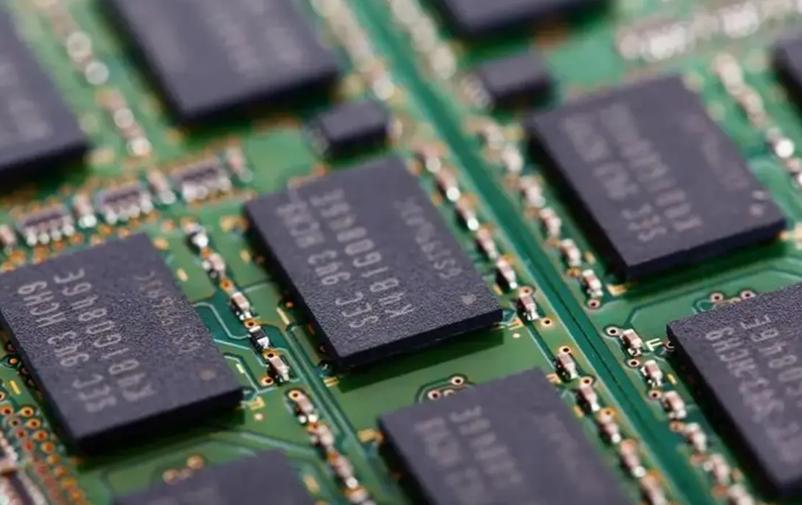
The Vietnamese government has incorporated the semiconductor industry into one of the national key development strategies for the next 30 to 50 years, and has clearly listed it as one of the nine national products, and has formulated a series of policies and incentive mechanisms for this purpose, while establishing a national innovation center and investing heavily in creating a science and technology ecosystem. Benefiting from the dual pull of the manufacturing and real estate industries, Vietnam's economic recovery trend is obvious in 2024, and is expected to achieve the economic growth of 6% to 6.5% set by the government. Recently, Vietnam plans to build its first chip manufacturing plant in the country and become a "core country" in Southeast Asia. Although Vietnam has made a head start in the manufacturing sector, establishing several contract manufacturing companies, the government is still pursuing a higher level of industry. By 2030, the Vietnamese government plans to develop into a semiconductor chip manufacturing and export center in Southeast Asia and a design, packaging and testing center for the global semiconductor chip industry. The Vietnamese government is committed to building a full industrial chain ecosystem that combines semiconductors and chips. To this end, the Vietnamese government expects to attract more domestic and foreign giants to invest to join and complete the construction of the first domestic chip manufacturing plant.
In recent years, the Ministry of Communications and Media has begun to implement a development strategy for the semiconductor industry, according to which Vietnam needs to adopt various measures and decisions to ensure that the semiconductor industry has a complete infrastructure to contribute to the sustainable development of Vietnam's digital industry, while laying a solid foundation for the realization of digital transformation, the development of digital economy and the construction of digital government.
If the Vietnamese government supports the chip manufacturing industry, it should pay attention to the following points: First, talent training, the Vietnamese government regards talents as the cornerstone of the development of the semiconductor industry, and the Vietnamese government attaches great importance to the training of talents in science, technology, engineering and other related fields. According to statistics, the annual demand for Vietnam's semiconductor industry engineers is 5,000 to 10,000 people, as of the end of 2023, Vietnam's chip design engineers are about 5,500, and 35 universities in Vietnam have also newly opened related majors on the semiconductor industry. At present, the semiconductor industry human resources training is still in its infancy, in order to solve the shortage of high-end talent demand, the Vietnamese government invested 1 billion US dollars to train semiconductor talents, including cooperation with well-known global companies to build a chip design software platform.
The second is to formulate relevant policy preferences and incentive mechanisms. In order to vigorously support the development of the semiconductor industry, the Vietnamese government has formulated and implemented a series of preferential policies and incentive mechanisms. The Vietnamese government provides industry funding through the science fund and conducts national joint research with private companies such as FPT. At the same time, the Vietnamese government has also built three new high-tech parks in Ho Chi Minh City in the south, Hanoi City in the north and Da Nang City in the central part of the country to attract semiconductor companies with more favorable landing policies. At the same time, the Vietnamese government has also established a national innovation Center to create a high-tech ecosystem to provide strong support for the development of the semiconductor industry.
The government of Vietnam launched the Vietnam Innovation Challenge Plan 2024, which aims to promote the semiconductor and artificial intelligence industries and conquer the global market. Through a series of solutions such as solicitation, recognition and creation of intelligent platforms, we will raise public awareness of the value of the semiconductor and artificial intelligence industry, further improve corporate performance, develop new products and promote the transformation of scientific research results, in order to raise public awareness of the value of the semiconductor and artificial intelligence industry.

To sum up, Vietnam has made remarkable progress in upgrading its chip manufacturing capabilities, and the Vietnamese government has strongly supported the development of the semiconductor industry through various policy incentives and incentives such as tax incentives, funding and joint research, talent training and introduction, industrial parks and innovation centers, special investment funds, and strategic plans and targets. The implementation of these measures will help Vietnam play a more important role in the global semiconductor market and promote the growth of the domestic economy and technological innovation. It has laid a solid foundation for building an important base for the global semiconductor chip industry.

Recently, a major piece of news has emerged in the US political arena: The Trump administration is considering passing an executive order to reclassify marijuana from a federally controlled drug to three categories, aligning its regulatory standards with those of prescription painkillers such as Tylenol containing codeine.
Recently, a major piece of news has emerged in the US polit…
Against the backdrop of the Federal Reserve's third rate cu…
Recently, according to Xinhua News Agency, Bolivian Foreign…
President Trump's political career has consistently defied …
On December 15, 2025 (local time), former U.S. President Do…
Recently, a report by Bloomberg has pushed the global techn…